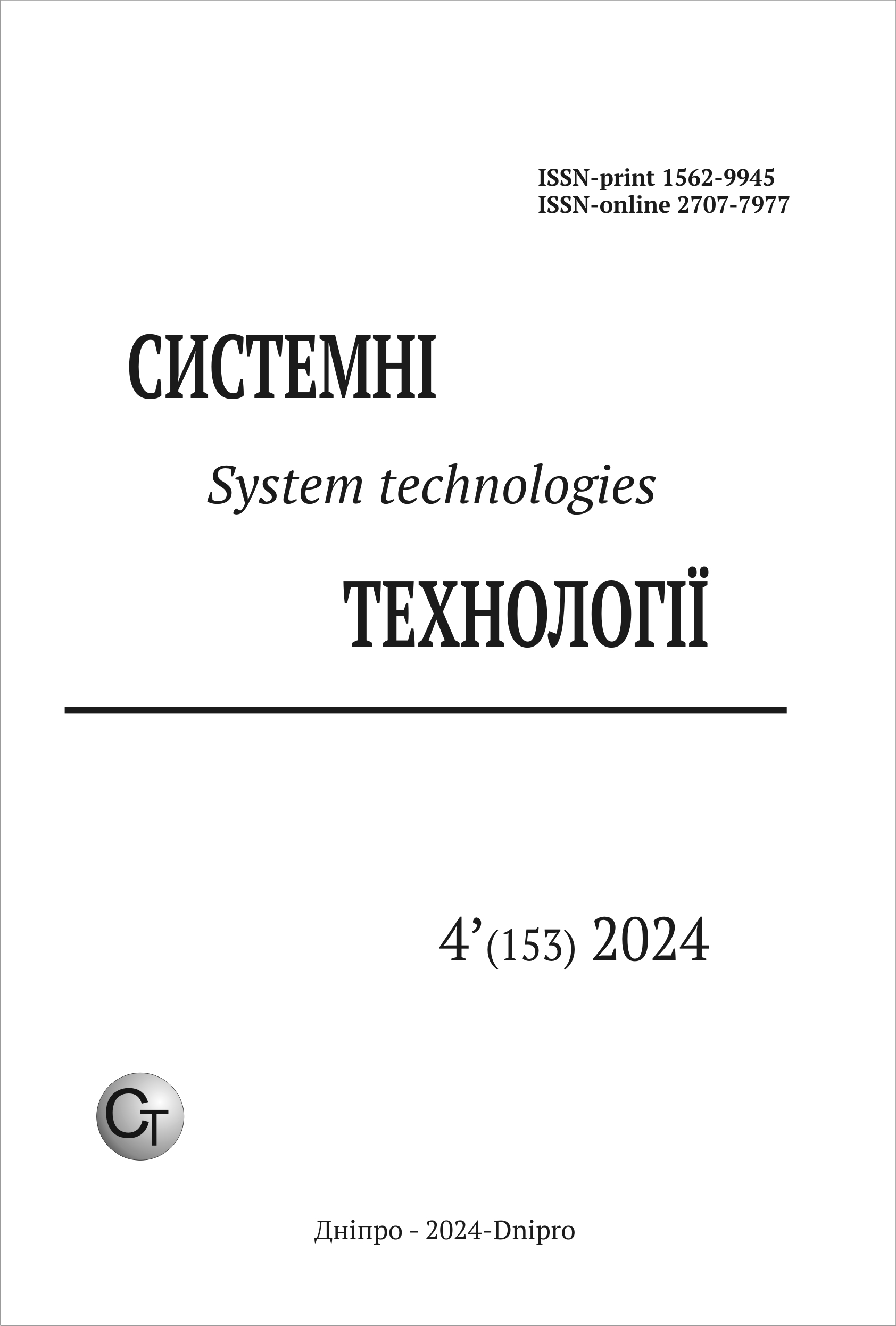НЕЙРОМЕРЕЖЕВИЙ ПІДХІД СЕГМЕНТАЦІЇ СІЛЬСЬКОГОСПОДАРСЬКИХ УГІДЬ НА СУПУТНИКОВИХ ЗОБРАЖЕННЯХ
DOI:
https://doi.org/10.34185/1562-9945-4-153-2024-09Ключові слова:
семантична сегментація, агроугіддя, супутникові зображення, глибоке навчання, архітектура U-Net, геодані.Анотація
В сучасному аграрному секторі важливу роль відіграє точне картографування та моніторинг агроугідь за допомогою супутникових знімків, що дозволяє оптимізувати використання ресурсів, планувати посівні площі та прогнозувати врожайність. Семантична сегментація геоданих за допомогою глибокого навчання відкриває нові можливості для автоматизації цих процесів, проте потребує ретельного вибору та оптимізації моделей, здатних ефективно працювати з високорозмірними геопросторо-вими даними. Дана робота присвячена аналізу та порівнянню трьох різних модифікацій архітектури U-Net для задачі семантичної сегментації агроугідь на основі супутникових зображень. Було досліджено моделі з різними архітектурними особливостями, включаючи застосування остаточних блоків, методів нормалізації та регуляризації. Результати показали, що деякі модифікації архітектури U-Net можуть значно підвищити точність сегментації, що відкриває шлях для подальших досліджень у напрямку вдосконалення алгоритмів обробки супутникових даних для потреб аграр-ного сектору.
Посилання
Jamali, A., Roy, S.K., Hashemi Beni, L., Pradhan, B., Li, J., Ghamisi, P., 2024. Re-sidual wave vision U-Net for flood mapping using dual polarization Sentinel-1 SAR imagery. International Journal of Applied Earth Observation and Geoinformation 127, March 2024, 103662. https://doi.org/10.1016/j.jag.2024.103662
Yoganathan, S.A., et al., 2023. Generating synthetic images from cone beam com-puted tomography using self-attention residual UNet for head and neck radiother-apy. Physics and Imaging in Radiation Oncology VOLUME 28, 100512, OCTOBER 2023. https://doi.org/10.1016/j.phro.2023.100512.
Janneh, L.L., Youngjun, Z., Hydara, M., Cui, Z., 2024. Deep learning-based hybrid feature selection for the semantic segmentation of crops and weeds. ICT Express 10 (2024) 118–124. https://doi.org/10.1016/j.icte.2023.07.008.
Ghaznavi A., Saberioon M., Brom J., Itzerott S., 2023. Comparative performance analysis of simple U-Net, residual attention U-Net, and VGG16-U-Net for inventory inland water bodies. Applied Computing and Geosciences 21 (2024) 100150. https://doi.org/10.1016/j.acags.2023.100150 .
Hnatushenko Vik., Hnatushenko Vo., Kashtan V., Heipke C., 2023: Detection of Forest Fire Consequences on Satellite Images using a Neural Network. In: Kersten T., Tilly N. (Eds.), 43. Wissenschaftlich-Technische Jahrestagung der DGPF e.V. - München, Publikations DGPF, Vol. 31
https://www.dgpf.de/src/tagung/jt2023/proceedings/paper/15_dgpf2023_Hnatushenko_et_al.pdf
HEIPKE C. & ROTTENSTEINER F., 2020: Deep learning for geometric and seman-tic tasks in photogrammetry and remote sensing. Geo-spatial Information Science, 23(1), 10-19, https://doi.org/10.1080/10095020.2020.1718003
KAPLAN, G. & AVDAN, U., 2018: Sentinel-1 and Sentinel-2 Data fusion for wet-lands mapping: Balikdami, Turkey. Int. Arch. Photogramm. Remote Sens. Spatial Inf. Sci., 42(3), 729-734, https://doi.org/10.5194/isprs-archives-XLII-3-729-2018.
KASHTAN, V. & HNATUSHENKO, V., 2023: Deep Learning Technology for Auto-matic Burnt Area Extraction Using Satellite High Spatial Resolution Images. In: Babichev, S., Lytvynenko, V. (eds) Lecture Notes in Data Engineering, Computational Intelligence, and Decision Making. ISDMCI 2022. Lecture Notes on Data Engineering and Communications Technologies, 149. Springer, Cham. https://doi.org/10.1007/978-3-031-16203-9_37.
Завантаження
Опубліковано
Номер
Розділ
Ліцензія
Авторське право (c) 2024 Системні технології

Ця робота ліцензується відповідно до ліцензії Creative Commons Attribution 4.0 International License.















